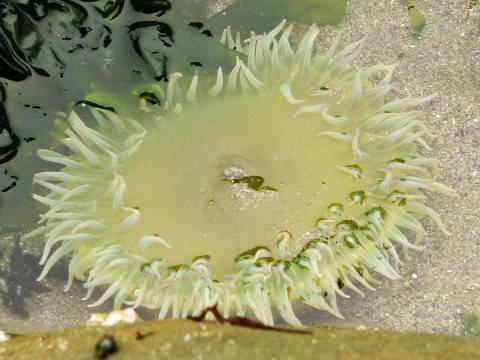





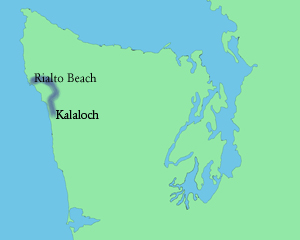
Today, we left Kalaloch Lodge, and wound up finally at Lake Crescent in the north. But the first leg of the trip involved starting out around 8:00AM and driving to Rialto Beach on the coast, where again it was pleasantly foggy.
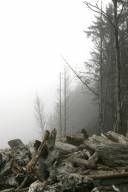
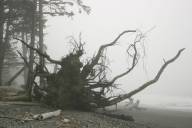
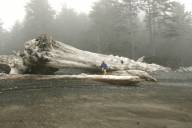
At the beach there, we saw the same scene of tumbled drift-logs and uprooted trees
that we had farther south. (Left thumbnail: small image,
large; center: small image,
large; right: small image,
large.)
From Rialto, we walked a mile and a half up to a place where there were some sea stacks, unreasonably picturesque, straight out of a Chinese painting. The figures, of course, are all wrong: they should be stooped-over old men, barefoot, with big walking staffs.

Big image; small |
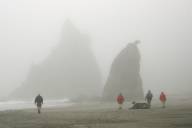
Big image; small |
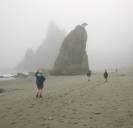
Big image; small |
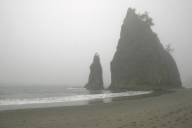
Big image; small |
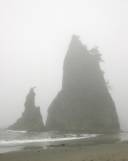
Big image; small |
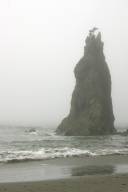
Big image; small |
Just a bit beyond these stacks was a rock structure called Hole in the Wall, blocking further walking northward, at least at this stage of the tide. Perhaps if the tides on Lake Champlain were more noticeable, the folks at Country Walkers would have known to schedule this walk at dead low tide. In the event, we arrived as the tide was at about half, and coming in, so that we couldn’t walk beyond. More seriously, the many tide pools here were either unreachable or about to be covered. We did see a couple of Sea Anemones, of which the nicest is pictured at the top of this page.
On sea-shore life: I was continually comparing these walks and what we saw with my several years’ experience in southern Maine, mostly Mere Point Neck, Harpswell Neck, Land’s End on Bailey Island, and Reid State Park on Georgetown Island. Even though anemones are said to be common in Maine, I had never spotted any, and I was glad to see them in their natural habitat, rather than in some tank. Since Puget Sound and the Straits of Juan de Fuca are supposed to harbor the world’s richest variety of sea stars, I was a little disappointed to see so few on these beach walks. On the other hand, I had already asked Steve about the surprising sterility of the beach on our previous walk. In Maine, there would be shells from at least a dozen bivalves and a few snails as well, while here all I saw was razor clams and empty crab shells. It’s true that a broad ocean-facing beach is not the best habitat for sea life—bays and rocky coasts are much better—but from the evidence, nothing seemed to be living out there.
We walked back the same way we had come, to find that Maribeth had set up a fabulous picnic lunch for us, complete with smoked oysters and wine, and afterwards, we piled into the vans to drive onward to a trail head on the Sol Duc River.
Previous day’s pictures; this afternoon’s pictures; next day’s pictures
Return to the main Northwest Trip page; to my home page.